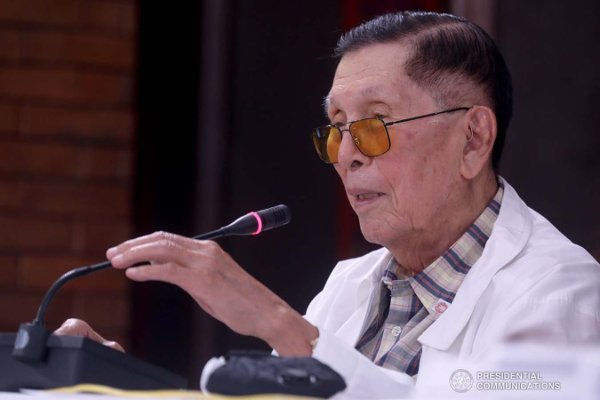PAYAO, Zamboanga Sibugay -Residents and local officials of this coastal town are opposing the setting up of a camp by the Moro National Liberation Front (MNLF) for the training of around a hundrednew recruits for its Bangsamoro Navy and want the structures dismantled.
Camp Buhawi’s construction began last May with three make-shift barracks made from bamboo and nipa, but the number of huts has risen to 24 and more are being set up. This alarmed residents, who reported the construction to the town mayor, who in turn called the provincial police to check on the on-going activity and take action.

MNLF Commander Habibul Maut (in black scarf) is flanked by Sibugay Police Director Nestor Tiempo (right) and Colonel Jonathan Obena of the 44th Infantry Batallion at the entrance gate of Camp Buhawi.
“From the looks of it, this is really a training camp,” said Colonel Jonathan Obena, Commanding Officer of the 44th Infantry Batallion, who inspected the camp on June 29 along with Sibugay police provincial director Superintendent Nestor Y. Tiempo and Payao Mayor Joeper Mendoza.
Payao residents, led by the town’s public officials, have expressed their opposition to a training camp in their backyard, saying that its presence brings back the trauma of the fierce battle when government forces tried to weed out a similar camp in 2011.
“We experienced war here when government forces engaged the renegade Muslim rebels when they put up a camp in Barangay Labatan in 2011,” said Mendoza.
“We cannot let it happen again,” he told reporters, while explaining that he needs to wait for the Philippine government’s decision on whether to recognize the MNLF camp.
Town councillor Jing Dacula said that he will immediately pass a resolution expressing the local government unit’s opposition to the presence of the camp in their town. “We won’t really allow them here,” he said in the local language.
Residents of the barangay told the police and military that training in the camp had started, causing fear and anxiety among them.

Some of the MNLF trainee-recruits.
MNLF denial
“That is fake news,” Camp Commander Habibul Maut denied they are setting up a camp, insisting that it is only a meeting place until they get clearance from the government to turn it into a training camp.
Looking at the arrangement of the huts or barracks, Obena said, the place is being built for training. Earlier they were informed that the place was designed as a meeting area.
A hut can accommodate four to eight people. Aside from the makeshift barracks, the camp, built on more than a hectare lot in Barangay Kulasian, has a large gathering hall, and a surrounding fence, with the Philippine and the MNLF flags hoisted on equal height at the middle of the camp.
Also, a tarpaulin poster that says it is a training camp of the Bangsamoro Navy is on display, alongside a photo of the memorandum order from MNLF chief Nur Misauri, and embedded separate photos of Misauri, Maut and President Rodrigo Duterte.
Maut said they have more than a hundred MNLF recruits but no training has taken place as they are still awaiting the ‘go signal’ from the Office of the Presidential Adviser on the Peace Process.
“We are just waiting for the ‘ok’ of the OPAPP,” he said, adding that the place for now serves as a venue for gathering and orientation. Most of the trainees have gone back to their respective homes in Zamboanga del Sur, Zamboanga Sibugay, Pagadian City, and Cotabato, pending clearance from the OPAPP, he explained. Most of them are Christians, he added.

. Inside one of the barracks are official uniforms of the Philippine Army and Philippine Marines.
Maut said that he is hoping that they will be integrated into the government armed forces, or if not, they can get livelihood assistance from the state.
In 1996, the Philippine government and the MNLF forged a peace agreement which led to the integration of about 5,000 MNLF soldiers into the government forces.
During the Marawi siege last year, the MNLF reiterated its support to the government.
In October 2011, government forces mounted a three-day air and ground operation against an unknown number of lawless elements led by rogue Moro Islamic Liberation Front commander Waning Abdusallam. The battle resulted in the deaths of two soldiers and six outlaws and the displacement of 11,000 residents of Payao and neighboring towns of Alicia, Mabuhay, Talusan and Olutanga towns.
The incursion led to the take-over by government forces of the rogue encampment of the outlaws in Sitio Talahib, Barangay Labatan, Payao municipality.
Under the proposed shift to a federal system of government, the Bangsamoro will be one of the 18 autonomous regions in the Philippines.


